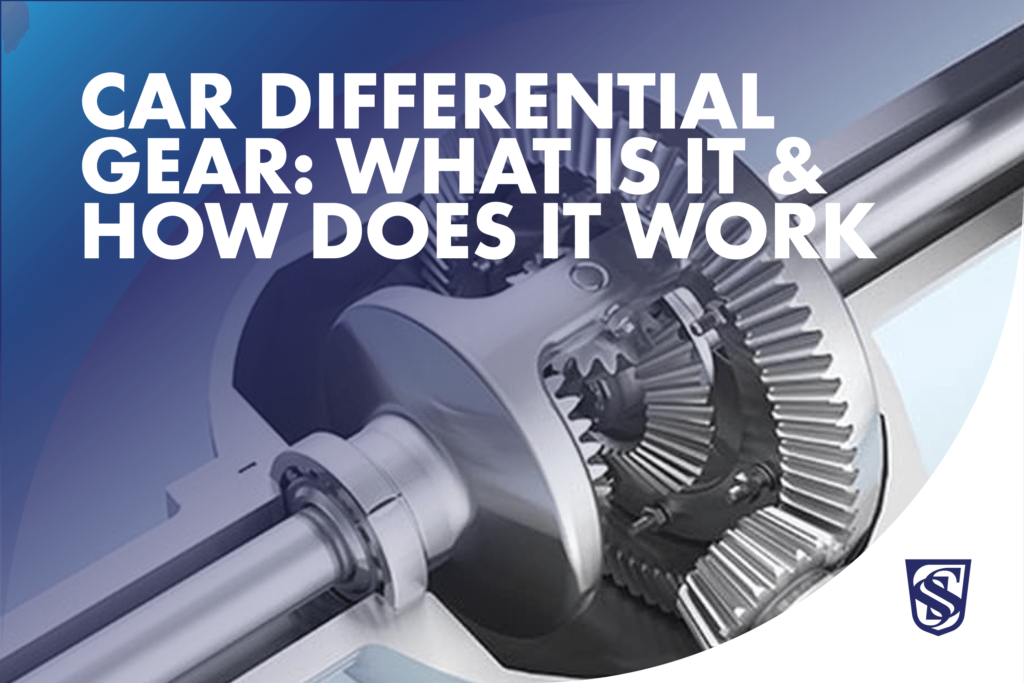What is a Differential in a Car?
The car differential gear is an important component that applies torque the vehicle’s drive wheels. A vehicle differential is different from the transmission. It is a part of the axle assembly and connects to the transmission through the driveshaft.
The word “differential” in differential gear refers to the system that allows your vehicle’s wheels to turn at different speeds. When you think of a differential gear, think of the word “different.” The outside wheel needs to move faster than the inside wheel when you make a turn, so the differential gear is very important. Cars that are all-wheel drive will have two differentials in total: one in the front and one in the back.
How Does a Car Differential Work?
A car differential gear is made up of many parts, including the ring gears, pinion gears, and carrier assembly. The pinion gear drives the ring gear, which then causes the carrier to rotate. As the carrier rotates the smaller (or “spider”) gears will begin to drive the side gears. This is what will then cause the vehicle’s wheels to go. You can ask your mechanic to inspect your car differential when they perform other auto services to make sure everything is operating correctly.
What are the 4 Types of Differentials?
Now that you know what is a differential in a car, the next step is understanding the types of differentials. There are four main types of vehicle differential: open, locking, limited-slip, and torque-vectoring differential.
Open Differential
Open differentials are common due to their reliability. In this type of vehicle differential, the pinion gear engages with the ring gear to transfer power to both axles. Open differentials are not the best for cars that are racing or off-roading because the tires could slip.
Locking Differential
In comparison, a locking differential is most commonly seen on off-road vehicles. This is because it uses both clutches and springs which activate locks. This lets each wheel have the same amount of power despite what the traction is.
Limited-slip Differential
A limited-slip differential is good in case one wheel loses traction. It locks the right and left sides of the axles together, transferring power to both wheels if one loses traction.
Torque-vectoring Differential
A torque vectoring differential calculates steering system data through complex sensors and other electronics. This vehicle differential is the newest technology and uses the data it gathers to improve the power distribution to each vehicle wheel. Torque-vectoring differentials are also great for getting the highest performance.
Bad Differential Symptoms
Understanding the symptoms of a bad front differential is important for making sure that your vehicle is operating at the highest level. It is also important for staying safe on the road. If you begin to notice any of these symptoms, bring your vehicle to a local transmission shop as soon as possible. Some bad differential symptoms that may mean your differential is broken include:
- Grinding noise from gears
- Oil leaking
- Whining noise
- Driveshaft vibrating when accelerating
- Difficulty handling around corners
- Unusual tire damage on the side wall or outer treads
Driving with a Damaged Car Differential
While you can drive with a damaged car differential, it is not the safest option. By waiting to complete the repair, other parts of your car may become damaged. This can hurt your car significantly and make a simple repair much more expensive. A broken car differential can also cause you to lose control of the car because of poor handling, which is very dangerous. As soon as you notice symptoms of a bad front differential or rear differential, book an appointment at your local auto shop.
Worked with Car Differential Expert
The car differential is a very unique and helpful component of your vehicle. However, knowing what is a car differential and repairing a differential are two very different things. If you are experiencing bad rear differential symptoms, find a car differential expert. This expert can diagnose the problem and provide the differential services needed to repair it. An expert repair will let you safely get back on the road and ensure that you don’t have more bad differential symptoms in the future.
